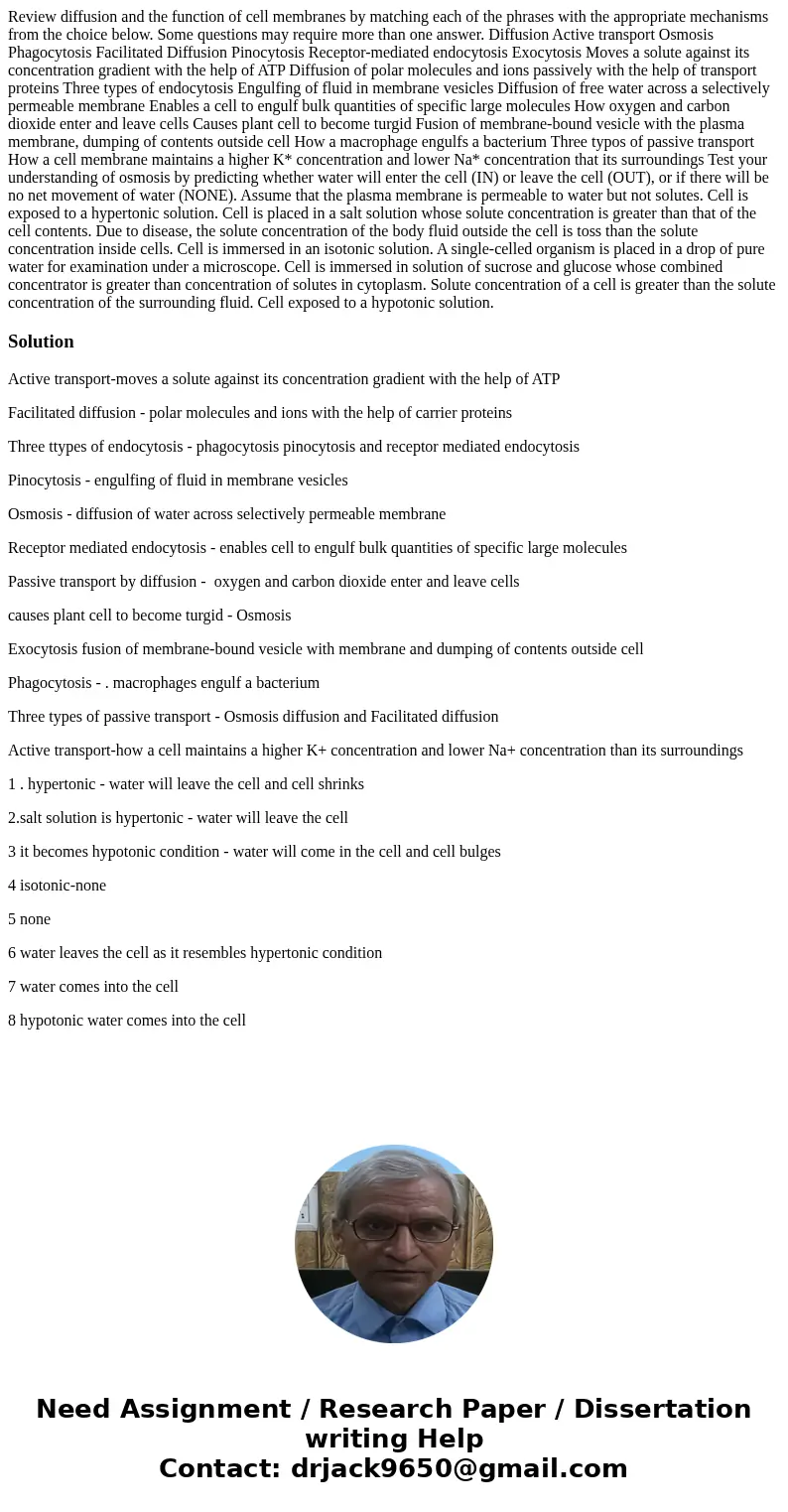Review diffusion and the function of cell membranes by matching each of the phrases with the appropriate mechanisms from the choice below. Some questions may require more than one answer. Diffusion Active transport Osmosis Phagocytosis Facilitated Diffusion Pinocytosis Receptor-mediated endocytosis Exocytosis Moves a solute against its concentration gradient with the help of ATP Diffusion of polar molecules and ions passively with the help of transport proteins Three types of endocytosis Engulfing of fluid in membrane vesicles Diffusion of free water across a selectively permeable membrane Enables a cell to engulf bulk quantities of specific large molecules How oxygen and carbon dioxide enter and leave cells Causes plant cell to become turgid Fusion of membrane-bound vesicle with the plasma membrane, dumping of contents outside cell How a macrophage engulfs a bacterium Three typos of passive transport How a cell membrane maintains a higher K* concentration and lower Na* concentration that its surroundings Test your understanding of osmosis by predicting whether water will enter the cell (IN) or leave the cell (OUT), or if there will be no net movement of water (NONE). Assume that the plasma membrane is permeable to water but not solutes. Cell is exposed to a hypertonic solution. Cell is placed in a salt solution whose solute concentration is greater than that of the cell contents. Due to disease, the solute concentration of the body fluid outside the cell is toss than the solute concentration inside cells. Cell is immersed in an isotonic solution. A single-celled organism is placed in a drop of pure water for examination under a microscope. Cell is immersed in solution of sucrose and glucose whose combined concentrator is greater than concentration of solutes in cytoplasm. Solute concentration of a cell is greater than the solute concentration of the surrounding fluid. Cell exposed to a hypotonic solution.
Active transport-moves a solute against its concentration gradient with the help of ATP
Facilitated diffusion - polar molecules and ions with the help of carrier proteins
Three ttypes of endocytosis - phagocytosis pinocytosis and receptor mediated endocytosis
Pinocytosis - engulfing of fluid in membrane vesicles
Osmosis - diffusion of water across selectively permeable membrane
Receptor mediated endocytosis - enables cell to engulf bulk quantities of specific large molecules
Passive transport by diffusion - oxygen and carbon dioxide enter and leave cells
causes plant cell to become turgid - Osmosis
Exocytosis fusion of membrane-bound vesicle with membrane and dumping of contents outside cell
Phagocytosis - . macrophages engulf a bacterium
Three types of passive transport - Osmosis diffusion and Facilitated diffusion
Active transport-how a cell maintains a higher K+ concentration and lower Na+ concentration than its surroundings
1 . hypertonic - water will leave the cell and cell shrinks
2.salt solution is hypertonic - water will leave the cell
3 it becomes hypotonic condition - water will come in the cell and cell bulges
4 isotonic-none
5 none
6 water leaves the cell as it resembles hypertonic condition
7 water comes into the cell
8 hypotonic water comes into the cell

 Homework Sourse
Homework Sourse